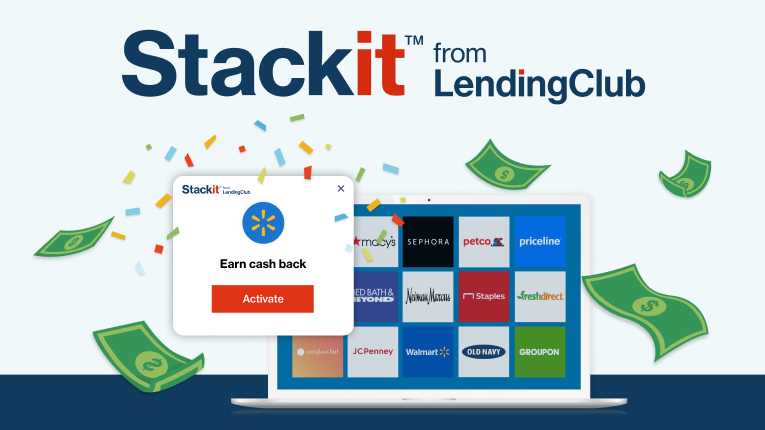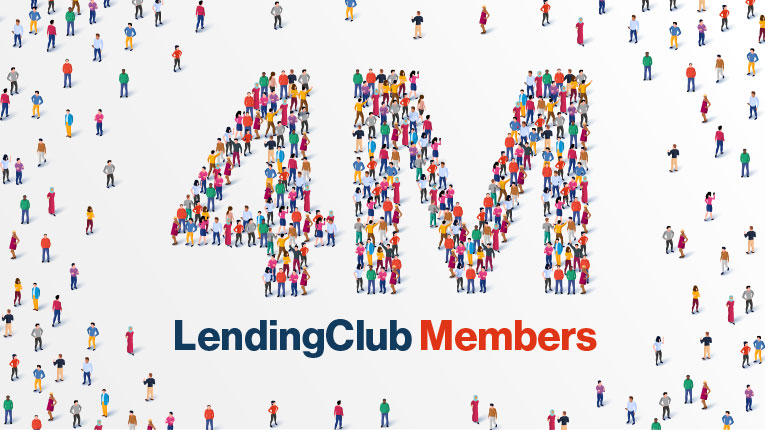8 Common Types of Loans (And the Benefits of Each)

Getting the right type of loan—whether it’s a small, short-term lump sum, or a more substantial long-term loan—starts with understanding your needs.
For quick, flexible funds, a cash loan allows you the flexibility to decide when and how to use the money. If you’re focused on debt consolidation or paying down credit cards, a balance transfer loan makes it simple—and often comes with the lowest APRs. If you’re rebuilding your credit or don’t qualify for a loan by yourself, many of our members apply with a co-borrower on a joint applicant loan to ensure they receive the financial support they need (even if they’ve struggled to get a loan in the past). An auto refinance loan can help you lower your monthly car payment (freeing up cash) by adjusting the length of your loan term, and/or help you save money by securing a lower interest rate.
Let's walk through some of the most common types of loans, and the financial situations best suited for each.
8 Common Types of Loans
Your financial situation is unique. While there are many kinds of loans, comparing your options can help you find the right fit for you.
1. Cash Loans
If you’re approved for a cash personal loan, the full loan amount is transferred directly into your bank account. This offers you complete flexibility as to how to use the funds—whether that’s for home improvement, medical bills, car repairs, moving, or wedding expenses.
You can also pay down high-interest debt, such as revolving credit card balances or other personal loans, for one affordable, fixed monthly loan payment.
Benefits
You decide how to use the money
One affordable, fixed monthly payment
Cash deposited directly into your bank account
2. Balance Transfer Loans
With a balance transfer loan, you can save money by having the lender pay down your credit cards or other debt directly, on your behalf. For example, at LendingClub, you choose which creditors you want to pay down and how much—and we make the payments for you. Any funds remaining from your loan will be deposited into your bank account. After that, you’ll have one affordable, fixed-rate monthly payment to be repaid over a set length of time.
Compared to balance transfer credit cards, a balance transfer loan has no temporary introductory period to worry about, no interest accrual (so you’ll never owe interest on top of interest), and no sudden increases to your APR.
Benefits
Pay off multiple creditors quickly
You control who gets paid and how much money to send
Payments are handled for you, so you have less to worry about
3. Co-borrower Loans
If you have a lower or bad credit score, higher debt level, or were denied a loan in the past, a co-borrower loan, also known as a joint personal loan, could help you get back on track. When you apply with a co-borrower (ideally, someone with a better credit score and history than you), the lender will take into consideration both you and your co-applicant's credit history and debt-to-income (DTI) ratios.
Applying with someone else can help you become eligible for a larger loan amount and lower rate than you would have qualified for on your own, which can save you money on interest in the long run. Keep in mind, if you happen to miss any payments or default on the loan, your co-borrower will become financially responsible for the repayment of the loan.
Benefits
Helps borrowers with challenging financial histories
Considers both applicants' credit history during the approval process
Enables the primary borrower to consolidate debt into one affordable, fixed payment
4. Auto Refinance Loans
If you’re stuck with a high interest rate and high monthly payment from buying your car from a dealer, then you may benefit from an auto-refinance loan with a new lender. While it’s relatively quick and easy to apply for an auto refinance loan online, be sure to compare offers with several different lenders first. Some lenders may offer attractive interest rates but tack on high origination fees and other charges, including prepayment penalties. Comparing APR vs interest rate is an important step when evaluating a loan.
Benefits
Fast, online process
Lower monthly payments and flexible terms
5. Home Loans
You have many lending options when it comes time to buy a home. Conventional loans, the most popular option, come with either fixed (interest rate remains the same for the life of the loan) or variable rates, as well as interest-only options, all ranging from 10- to 30-years in length. Variable rate and interest-only loan options often offer lower introductory rates, however many borrowers experience regular rate increases and/or balloon payments over the course of their loan term.
First-time homebuyers and those with imperfect credit can usually find loans that require a lower down payment than conventional loans through the Federal Housing Administration (FHA). Special home loan programs offering low interest rates and special terms are available through the Department of Veterans Affairs (VA), USDA, or local organizations in support of eligible military veterans and low- to middle-income borrowers in rural communities.
Benefits
Range of home loan options can make qualifying easier
Different loan lengths to suit your needs
Buying a home can help build equity and personal net worth
6. Student Loans
Student loans can be used to fund both education and associated costs, such as textbooks and room and board. Student loans are available through the U.S. government and private lenders. While government student loans may come with stricter loan limits, private student loans can carry higher interest rates.
Benefits
Can offer a pathway to higher education
Loan repayment is often delayed until after graduation
Can be used to fund both education and associated living expenses
7. Payday Loans
Payday loans are short-term loans designed to cover a sudden, unexpected expense. These types of loans often offer same-day loan funding and no credit check. However, unlike personal loans that offer low, fixed rates over several months or years, payday loans are risky, carry extremely high interest rates—up to 400 percent—and usually demand quick repayment terms. Most borrowers will need to repay a loan in full by the next payday or face extraordinarily high fees.
Benefits
Does not require a credit check
Same-day loan funding (borrowers must repay quickly or face high fees)
8. Debt Consolidation Loans
If you have high-interest debt, a debt consolidation loan works by merging all of your existing debt into one monthly payment, often at a lower interest rate and more favorable terms than most credit cards. If you’ve been struggling to manage multiple payments to different lenders, or want to pay down large chunks of debt, a debt consolidation loan can help you quickly get your head above water. If after getting a debt consolidation loan you keep up with payments and keep your revolving debt low going forward, this type of loan can help you improve your credit score over time.
Benefits
Lower interest rate and better terms than most credit cards
One fixed monthly payment
Can help improve credit score
How Do Loans Work? 3 Important Differences
While there are many individual types of loans, most loans have three important differences. Knowing what to expect can help you choose the right loan, with the right terms and interest rates, for you.
Secured loans vs. unsecured loans
Different types of loans are either considered secured or unsecured loans. With some loans, such as personal loans, you can choose between a secured or unsecured loan.
Secured loans are backed by collateral. For example, a home loan is backed by your home. Other loans can be backed by personal property or your savings. Secured loans often offer lower interest rates, but you’ll put your collateral at risk if you default on the loan.
Unsecured loans don’t require any collateral. Many personal loans, balance transfer loans, and debt consolidation loans are unsecured loans. While you don’t have to put something you worked hard for at risk, unsecured loans can carry higher interest rates.
Fixed interest rate vs. variable interest rate
Your interest rate might be the single most important factor in choosing a loan. After all, your interest rate defines how much you’ll pay for you loan. Depending on your loan, you may be offered a fixed rate or variable rate.
A fixed-rate loan is pre-set for the life of the loan, whether that be three or 30 years, your rate won’t go up. Knowing what you’ll pay each month can help you budget repaying your loan. A variable interest rate loan can increase incrementally, depending on your specific loan terms. Variable rate loans often offer low “teaser” rates, which can be attractive, but managing increases can be difficult to plan for.
Close-ended vs. open-ended
Your loan can either be closed-ended or open-ended depending on the kind of loan you need and your terms. A close-ended loan has a set end date. For example, if you take out a personal loan, your terms will include a payment schedule and fixed number of payments. An open-ended loan is a revolving line of credit you can draw on as needed.
The Bottom Line
While there are many kinds of loans, you want to make sure you’re getting the best loan possible that meets your needs best. Once you decide what type of loan could be right for you, compare APRs across several different lenders. Pre-qualifying with a lender usually won’t impact your credit score, and gives you a better idea of what different lenders are offering.
Types of Loans FAQ
Still have questions? Some of these commonly asked questions may provide the answer.
What are the main types of loans?
The main types of loans include personal loans, home loans, student loans, auto loans and more. Each loan type is used for a different purpose and typically has different repayment terms and qualifying requirements.
Which loan type is the best?
There’s no one-size-fits-all answer for when it comes to choosing the best loan type. The best loan type for you depends on your current financial situation and what you plan to use the loan for. If you’re focused on paying down credit card debt, a balance transfer loan might make the most sense and often comes with the lowest APRs. LendingClub also makes it easy to check your rate for a personal loan. It’s free and won’t impact your credit score.
What are secured loan types?
A secured loan is a debt that’s backed by collateral you provide to your creditor. The most common examples being car loans or mortgages. The main benefit of a secured loan is the lower interest rates attached to secured loans, however, if you don’t meet your payment obligations, the lender is legally entitled to seize the property backing the loan.
What are unsecured loan types?
An unsecured loan is a debt that has no collateral backing it. Some examples are credit card debt, student loans and medical bills. If you don’t repay the loan appropriately, your lender can’t legally seize your belongings. As a result, interest rates tend to be higher for unsecured debt over secured loans.
You May Also Like












